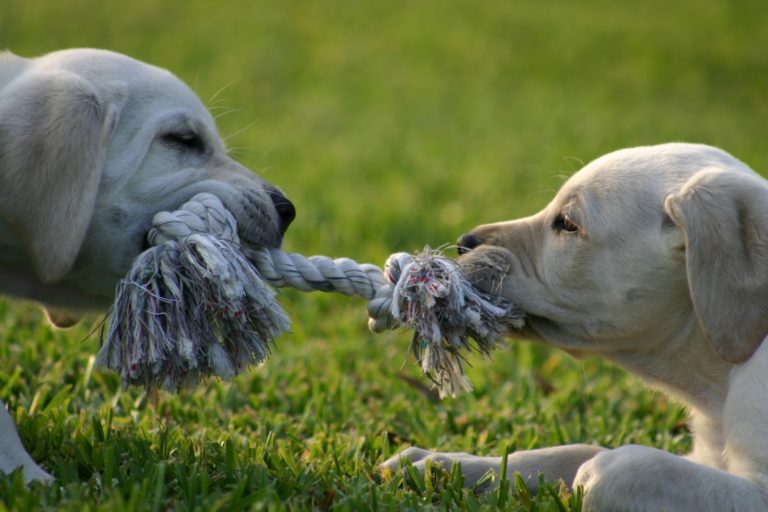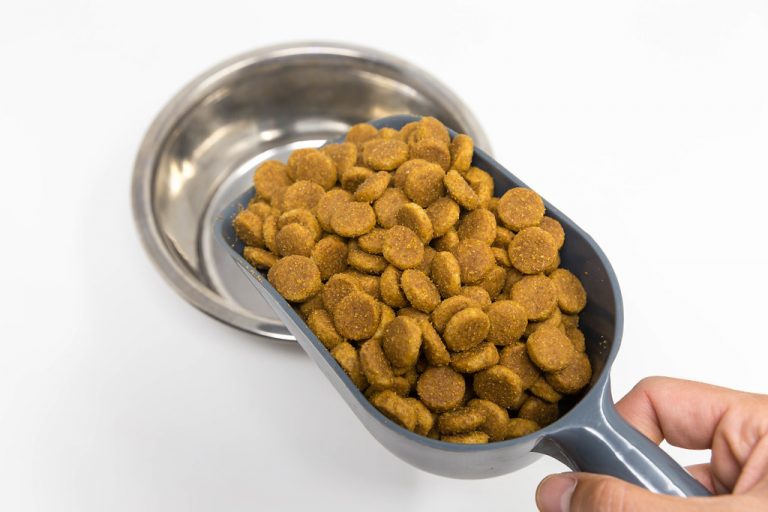
Labrador Retrievers are known for their exceptional sense of smell, which is why they’re commonly used in search and rescue missions, detection work, and hunting. In this section, we will delve into this amazing canine ability and understand how it sets them apart from other dog breeds. Knowing more about their olfactory capabilities can help you appreciate their sniffing prowess and take better care of your furry friend.
Key Takeaways
- Labrador Retrievers have an extraordinary sense of smell that sets them apart from other dog breeds.
- Their olfactory capabilities are used in various applications, including search and rescue missions, detection work, and hunting.
- Understanding their exceptional sense of smell can help you appreciate their potential and take better care of your Labrador Retriever.
How Labrador’s Sense of Smell Works
Labradors are known for their exceptional sense of smell, which sets them apart from other breeds. Their nose is their most powerful tool, allowing them to detect scents that humans cannot perceive. The Labrador’s sense of smell works differently than that of humans, and it’s important to understand how their olfactory system functions.
Labrador’s nose and scent receptors are designed for smell sensitivity. Their nose has up to 300 million scent receptors, compared to humans who only have about 5 million. This means that Labradors can detect a specific smell even when it’s incredibly diluted, which makes them excellent at scent detection tasks.
Smell Sensitivity in Labradors
Smell sensitivity in Labradors is further enhanced by their ability to use each nostril independently for scent detection. This means that they can locate the source of a smell more accurately, making them useful in search and rescue missions, detection work, and hunting. Their high level of smell sensitivity also allows them to detect changes in the scent of a person, animal, or object over time, making them skilled at tracking.
Labrador’s sense of smell works by inhaling and exhaling air through their nose, which passes over the olfactory receptors in their nasal cavity. These receptors then send signals to their brain’s olfactory bulb, where they are processed and interpreted as a scent. This process is incredibly fast, allowing Labradors to detect and process scents at lightning speed.
Overall, the Labrador’s sense of smell is a powerful tool that plays an important role in their daily life. Understanding how their nose and scent receptors work can help you appreciate their incredible scent detection ability.
The Science Behind Labrador’s Olfactory Intelligence
Labradors are renowned for their exceptional scent detection ability, which is rooted in their extraordinary olfactory intelligence. Their sense of smell is so refined that they can detect even the faintest scents with precision and accuracy, making them invaluable in various applications.
Their incredible scent detection ability is attributed to the unique qualities of their nose and scent receptors. Labradors have about 300 million scent receptors in their nose, which is approximately 50 times more than humans have. This increased number of receptors allows them to pick up scent molecules more effectively, even at long distances.
In addition, labradors have a pair of specialized scent glands known as Jacobson’s organs, which are located in the roof of their mouth. These organs are responsible for detecting pheromones, which are chemical signals that are emitted by other animals. By using these organs, Labradors can pick up crucial information such as the reproductive status or territorial boundaries of other animals.
The Importance of Training
While Labradors have a natural ability to detect scents, they still require extensive training to maximize their potential. Scent training involves exposing them to various scents and teaching them to recognize and differentiate between them. Through positive reinforcement training, they learn to associate specific scents with rewards, which motivates them to continue to detect and identify different scents.
Training also helps to enhance their natural scent detection skills by teaching them to focus on specific scents and ignore distractions. This is especially important in applications such as search and rescue missions, where the dog needs to concentrate on a specific scent amidst various distractions.
The Limits of a Labrador’s Sense of Smell
While a Labrador’s sense of smell is exceptional, it does have some limitations. The accuracy of their scent detection can be affected by external factors such as wind speed and direction. Additionally, their sense of smell may be impaired by the presence of strong chemicals or pollutants in the environment. It’s also important to note that scent detection is only effective within a certain range, and beyond that, it becomes less reliable.
Conclusion
The Labrador’s olfactory intelligence and scent detection ability are truly remarkable. Understanding the science behind their sense of smell is crucial in maximizing their potential in various applications. Through proper training and care, you can help your Labrador unleash their sniffing prowess to its fullest potential, making them even more valuable as your loyal companion.
Unleashing the Tracking Skills of a Labrador
Labradors are famous for their exceptional nose and scent tracking abilities. They have up to 300 million olfactory receptors, much more than humans, which makes their sense of smell about 100,000 times more powerful than ours. This makes them perfect for scent tracking work, from search and rescue missions to detection work.
The Labrador’s nose is well-designed for scent tracking. Their nostrils are wide, and they can inhale and exhale simultaneously, which helps them detect odors faster. The moist skin inside their nose is lined with thousands of tiny blood vessels, which helps absorb and detect scent molecules more effectively.
When a Labrador is tracking a scent, they use their olfactory system to pick up and analyze the scent molecules in the air. They can differentiate between different scents and follow a specific scent trail. They do this by processing the scent information in their brain and creating a “scent map” that helps them navigate their surroundings.
Training a Labrador for Scent Tracking
While Labradors have a natural aptitude for scent tracking, proper training is essential for developing their skills and enhancing their scent detection ability. With positive reinforcement training techniques, you can teach your Labrador to differentiate between different scents and follow a scent trail effectively.
Start by introducing your Labrador to various scents and reward them when they successfully identify them. As your Labrador becomes more proficient in recognizing different scents, start training them to follow a scent trail. You can use scent tracking exercises or scent-based games to provide your Labrador with the necessary practice.
The Importance of Labrador’s Scent Detection Ability
Labradors are known for their excellent scent detection ability, which has made them a popular choice for various roles, from assistance dogs to hunting companions. Their sense of smell plays a vital role in their everyday life, helping them navigate the world and communicate with their surroundings.
Labrador’s scent detection ability has also found applications in various fields, including medical research, criminal investigations, and conservation. Their nose can detect a range of substances, from drugs and explosives to wildlife scat, making them an invaluable tool for numerous industries.
Overall, the Labrador’s nose and scent tracking skills are truly remarkable. Their superior sense of smell is a testament to their exceptional olfactory abilities and makes them an indispensable part of our world.
The Labrador’s Sense of Smell in Everyday Life
Your furry Labrador Retriever is more than just a cuddly companion; they possess extraordinary olfactory capabilities that contribute to their role as reliable hunting companions, assistance dogs, and family pets. Their superior sense of smell sets them apart from other dog breeds and makes them a favorite among dog owners. In this section, we will explore how a Labrador’s olfactory capabilities come into play in their everyday life.
As a hunting companion, Labradors’ sense of smell helps them detect and retrieve prey, making them a popular choice for waterfowl hunting. Their natural ability to track scents also makes them ideal for search and rescue missions, where they can locate missing individuals even in challenging environments. Their remarkable scent detection ability is also utilized in law enforcement, where they are trained to detect illegal substances, explosives, and other contraband.
As assistance dogs, Labradors are trained to use their sense of smell to provide invaluable assistance to individuals with disabilities. They can detect changes in blood sugar levels, alerting their owners to potential diabetic episodes. They can also sense oncoming seizures and other medical emergencies, giving their owners time to take action. Their scent detection ability also makes them effective therapy dogs, providing emotional support to individuals struggling with mental health issues.
As family pets, Labradors’ sense of smell contributes to their playful and endearing behavior. They can sniff out treats and toys hidden in the house, making for a fun game of hide-and-seek. They can also detect familiar scents, recognizing their owners from a distance and providing a heartwarming reunion every time.
The Labrador’s olfactory capabilities also come into play in their feeding habits. Their sense of smell allows them to detect and appreciate the flavors and aromas of their dog food, making them picky eaters. It’s essential to provide them with a balanced and nutritious diet while maintaining their sense of smell health.
In conclusion, the Labrador Retriever’s sense of smell is a remarkable tool that enhances their daily activities. It contributes to their role as hunting companions, assistance dogs, and family pets, making them a reliable and beloved breed. Understanding their olfactory capabilities is crucial in highlighting their unique qualities and providing them with adequate care and attention.
Training Techniques to Enhance Labrador’s Scent Detection
Labrador Retrievers are known for their exceptional sense of smell, making them excellent candidates for scent detection work. With proper training, you can enhance their natural olfactory talents and maximize their potential in various scent-based activities.
One effective training technique is to use positive reinforcement, rewarding your pup with treats or praise when they successfully identify a specific scent. Start with simple exercises, gradually increasing the difficulty, and rewarding only when they correctly complete the task.
Another method is to play scent-based games with your Labrador, such as hiding treats or toys around the house or yard and encouraging them to find them using their nose. This not only enhances their scent detection abilities but also stimulates their mind and provides exercise.
It’s essential to maintain consistency in your training routine, dedicating sufficient time and patience to each session. Also, ensure that the scent-based activities remain enjoyable and rewarding for your dog, as this will encourage continued interest and engagement.
Remember to keep training sessions short and frequent, avoiding long periods of intensive training, which may lead to frustration or disinterest. Also, be sure to offer ample rest periods and plenty of water during training sessions.
Conclusion
Effective training techniques can enhance a Labrador’s scent detection ability, improving their overall smell detection skills. With patience and consistency, you can unlock the full potential of your Labrador’s remarkable olfactory capabilities and enjoy the rewards of their sniffing prowess.
Caring for a Labrador’s Nose and Scent Health
As a responsible owner of a Labrador Retriever, it’s essential to care for their nose and scent health. These furry companions rely heavily on their incredible sense of smell, and it’s crucial to maintain their olfactory system to ensure they stay healthy and happy.
Labrador’s nose is incredibly sensitive, containing up to 300 million scent receptors, which is 50 times more than human noses. Due to their exceptional olfactory capabilities, Labradors are often used in search and rescue missions, detection work, and as assistance dogs.
Tips for Caring for Your Labrador’s Nose
Here are some tips for maintaining your Labrador’s nose’s health:
- Regularly clean their nose with a damp cloth to remove dirt and debris.
- Avoid using harsh chemicals or soaps on their nose, as this can irritate the skin and affect their sense of smell.
- Apply a pet-safe nose balm to keep their nose moisturized, especially during dry weather conditions.
- Regularly trim the hair around their nose to prevent it from obstructing their sense of smell.
Keeping Your Labrador’s Scent Receptors Healthy
In addition to caring for their nose, it’s also essential to keep your Labrador’s scent receptors healthy. Here are some tips:
- Avoid exposing your Labrador to strong chemicals or fragrances, as this can damage their scent receptors.
- Provide your Labrador with a healthy diet rich in essential fatty acids, which can help maintain their scent receptors’ health.
- Regular exercise can also contribute to the health of your Labrador’s scent receptors.
Signs of Olfactory Issues
It’s essential to be aware of signs that your Labrador may be experiencing olfactory issues. Here are some common symptoms:
- Difficulty finding treats or toys using their nose.
- An uncharacteristic lack of interest in food or treats.
- Sneezing or discharge from the nose.
- Excessive scratching or rubbing of the nose area.
If you notice any of these signs, consult your veterinarian, as this may indicate an underlying health issue that requires treatment.
Caring for your Labrador’s nose and scent health can contribute to their overall wellbeing and enhance their exceptional sense of smell. By following these tips, you can keep your furry friend’s nose in optimal condition and help them make the most of their incredible olfactory capabilities.
Conclusion
Now that you have explored the Labrador’s sense of smell in detail, you have gained a deeper appreciation of their extraordinary olfactory capabilities. From understanding how their nose and scent receptors work to exploring the science behind their scent detection ability, you have learned why Labradors are exceptional in sniffing out scents.
You have discovered how their innate tracking skills make them valuable in various applications, from search and rescue missions to detection work. Furthermore, you have learned about the practical applications of their sense of smell in everyday life, as assistance dogs, hunting companions, and family pets.
By exploring effective training techniques, you can enhance a Labrador’s scent detection ability and tap into their natural olfactory talents. Remember to care for their nose and maintain their scent health, as this contributes to their overall well-being.
Finally, take a moment to appreciate the unique qualities that make Labradors exceptional in scent detection and embrace the wonders of their sniffing prowess. Whether you are a Labrador owner or simply fascinated by their olfactory capabilities, understanding their sense of smell adds another layer of appreciation for these amazing creatures.
FAQ
What sets Labrador Retrievers apart in terms of their sense of smell?
Labrador Retrievers have an exceptional sense of smell that sets them apart from other dog breeds. They have a high number of scent receptors in their nose, allowing them to detect and identify a wide range of smells.
How does a Labrador’s sense of smell work?
A Labrador’s sense of smell works through their nose and scent receptors. They have a large and moist nose that helps to capture odors from the air. These odors are then processed by their scent receptors, which send signals to the brain for interpretation.
What is the science behind a Labrador’s olfactory intelligence?
Labrador Retrievers possess a high level of olfactory intelligence. Their scent detection ability is enhanced by their strong sense of smell and their ability to differentiate between different scents. Through training, Labradors can further develop their natural smell detection skills.
How do Labradors excel in scent tracking?
Labradors excel in scent tracking due to their innate tracking skills and their exceptional sense of smell. They are frequently used in search and rescue missions and detection work, where their noses play a vital role in locating specific scents.
How does a Labrador’s sense of smell contribute to their role as family pets?
A Labrador’s superior sense of smell contributes to their role as family pets in various ways. They can detect potential danger and serve as a protective alarm system. Additionally, their ability to sniff out treats or hidden objects adds an element of fun to everyday life.
What are some effective training techniques to enhance a Labrador’s scent detection ability?
To enhance a Labrador’s scent detection ability, it is important to use positive reinforcement training methods. This can include using scent detection games, gradually increasing difficulty levels, and rewarding successful scent detection behavior.
How can I care for my Labrador’s nose and maintain their scent health?
Caring for your Labrador’s nose involves regular cleaning and keeping it moisturized to prevent dryness or cracking. It is also important to regularly check for any abnormalities or issues that may affect their scent health. Consult with a veterinarian for specific care recommendations.








